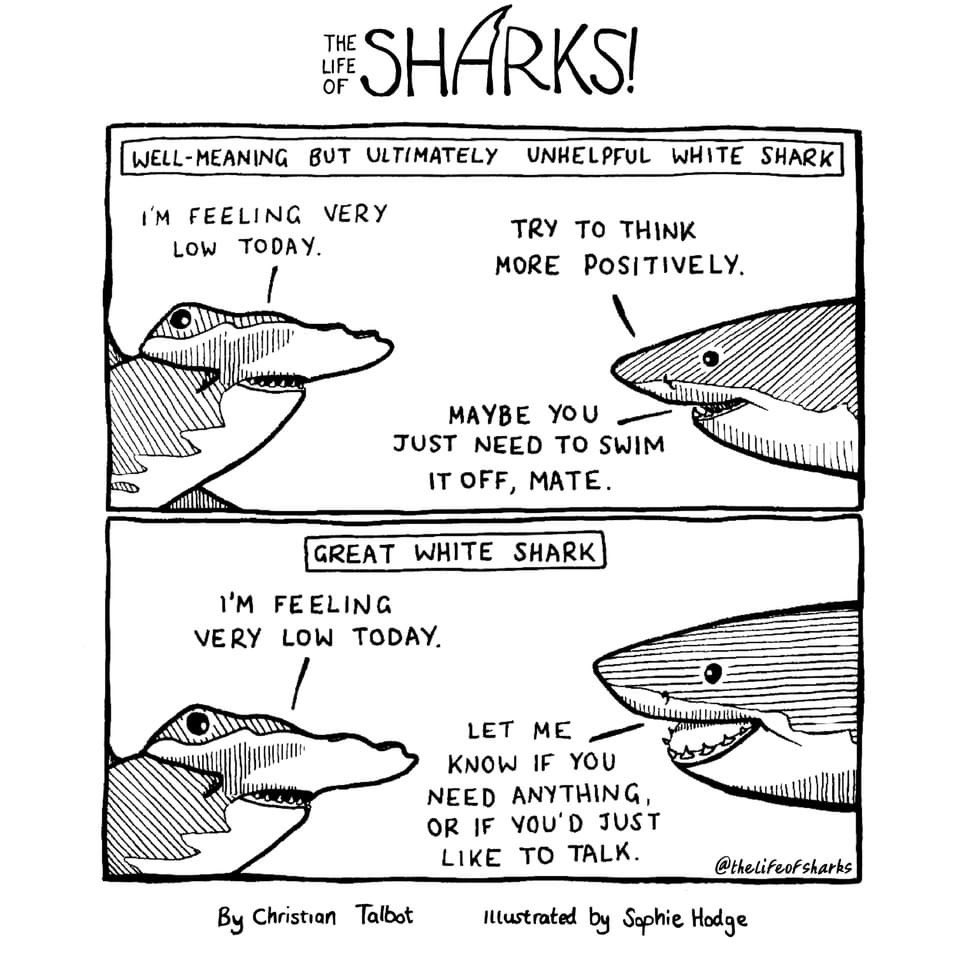07 Sep Cartoons are often funny because we want them to be true

I saw this on Twitter today. I get it – people want to feel listened to rather than lectured. It also highlights the difference between empathy and sympathy. I come from a family with a long history of chronic pain and other health issues. I spent much of the past two decades making a film about the mind body connection from a very personal perspective. During that time, I have done a great deal of work to connect with how my own experiences and beliefs impact my life and my health. Despite that work, I recognize that it’s a process and not a destination. In other words, I don’t think changing one’s perspective is a magic bullet. However, I do know – both from my own experience as well as my work with others – that doing the work of recognizing our own issues can have positive health effects. Again, having done this work for years I also know how profound the resistance can be to the idea that taking a look at what’s going on emotionally in our lives might help us overcome illness.
In the above cartoon, the white shark is presented as a clueless and uncaring ass who doesn’t have the ability to communicate any sympathy whatsoever. The white shark is a narcissist who can only see the world from their own perspective and doesn’t know how to see that the hammerhead shark is crying out for help. The well-meaning shark’s advice is presented as tone deaf. We all get that the white shark should know enough that the sad shark is seeking sympathy. We can all laugh at this pompous fool who doesn’t get that. The great white shark is the opposite. It has a bottomless pit of non-judgmental sympathy to offer. It’s like the greatest sympathetic mommy shark of all time. We all want that shark at some point; a sympathetic ear to take away our pain. The question becomes whether or not that will help us in long run, or does it instead help to keep us stuck in patterns that may not serve us.
Life is more complex than a cartoon. The most helpful shark is one that is able to communicate both of these ideas: empathy for the predicament the hammerhead is in, but also an awareness that much of our healing comes from within. “I’m here to listen to you, but I also have some advice that might help. I have walked a mile or two in the shoes you’re wearing and I think I have some understanding of what you’re going through. In fact, I can share some tools that might help you to move past these bad feelings you are struggling with. Since we have already talked about it a lot, I can see that you are mostly talking about bad things that are happening to you, but I also notice you seem to have stopped working to address what you can do about some of those things. Meditation, journaling, therapy, and working to understand your own expectations and traumas can help a lot. I don’t think that every tool I suggest will help everybody, but in general, I have seen that our expectations and the traumas that we have experienced have major impacts on how we respond to the world. So, again, I’m happy to listen to you, but I also think that for us to have a balanced relationship, it’s important that you also make space to listen to me and not express anger at me that I’ve told you that looking at what’s going on in your life, with your emotions, is an important aspect of getting out of the place you feel stuck in. In fact, the fact that you have such anger at me for suggesting it points to the idea that it’s a good place to examine.”
Taken from this perspective, the white shark (i.e. the buffoon) might have had enough experience with sympathy-seeking sharks that they have learned to be self protective to preclude being dragged into the the sad shark’s hole. Speaking as someone who has had a lot of experience with that, I’d say that the work I have done to recognize the pattern has helped me to recognize the need for boundaries and awareness. I also have a lot of incredible experiences where I have been able to help people because they were willing to do some of the work themselves. It’s often not possible to pull a sad shark out of it’s downward spiral if it’s not willing to do some of the work itself. It’s possible to help someone get out of a hole, but it’s a lot harder – and more enervating – to pull them out. Even if you can, they are much more likely to flop back in it if they haven’t developed the strength, awareness or tools to help them stay out.

No Comments